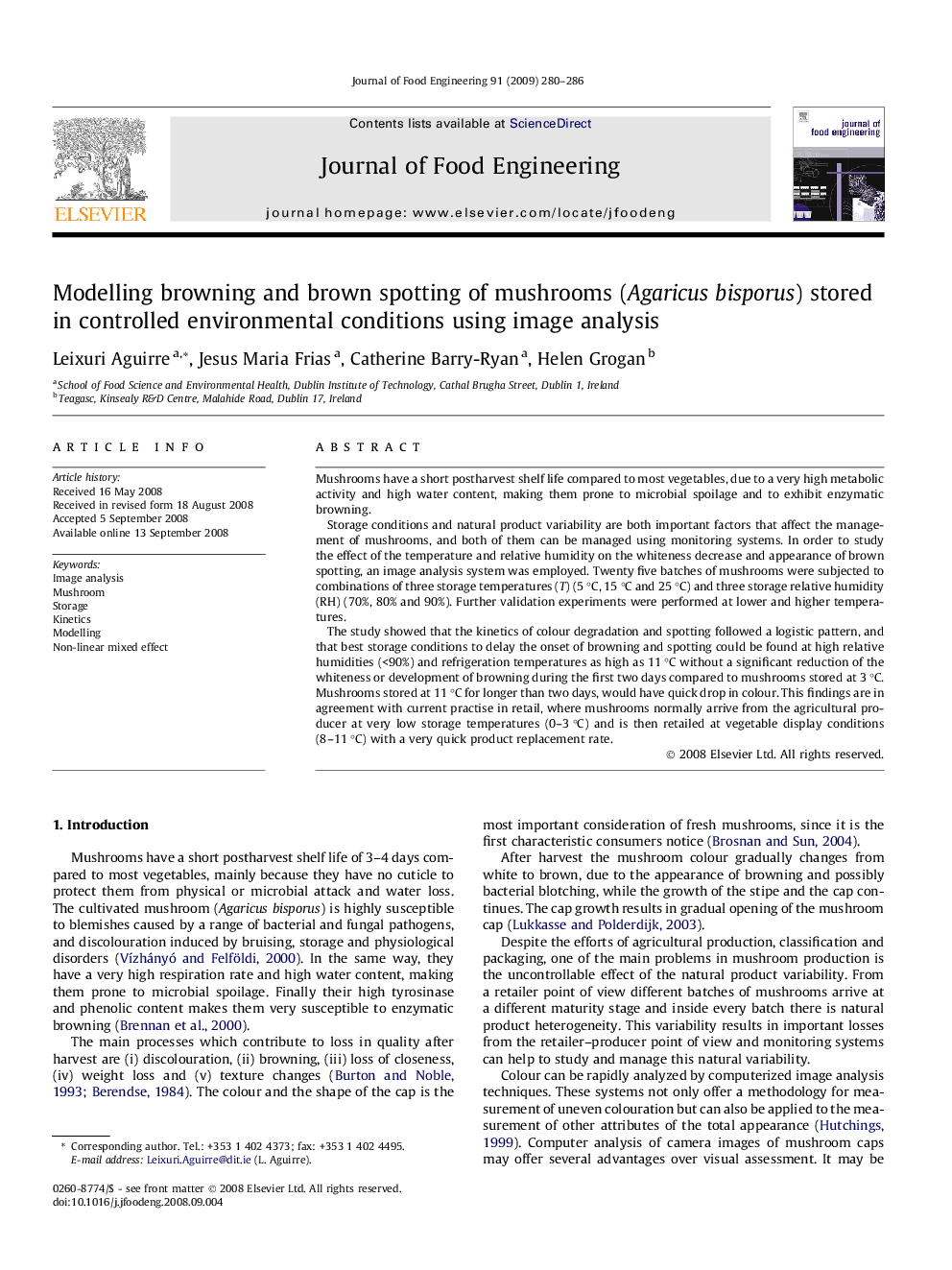| Article ID | Journal | Published Year | Pages | File Type |
|---|---|---|---|---|
| 224931 | Journal of Food Engineering | 2009 | 7 Pages |
Mushrooms have a short postharvest shelf life compared to most vegetables, due to a very high metabolic activity and high water content, making them prone to microbial spoilage and to exhibit enzymatic browning.Storage conditions and natural product variability are both important factors that affect the management of mushrooms, and both of them can be managed using monitoring systems. In order to study the effect of the temperature and relative humidity on the whiteness decrease and appearance of brown spotting, an image analysis system was employed. Twenty five batches of mushrooms were subjected to combinations of three storage temperatures (T) (5 °C, 15 °C and 25 °C) and three storage relative humidity (RH) (70%, 80% and 90%). Further validation experiments were performed at lower and higher temperatures.The study showed that the kinetics of colour degradation and spotting followed a logistic pattern, and that best storage conditions to delay the onset of browning and spotting could be found at high relative humidities (<90%) and refrigeration temperatures as high as 11 °C without a significant reduction of the whiteness or development of browning during the first two days compared to mushrooms stored at 3 °C. Mushrooms stored at 11 °C for longer than two days, would have quick drop in colour. This findings are in agreement with current practise in retail, where mushrooms normally arrive from the agricultural producer at very low storage temperatures (0–3 °C) and is then retailed at vegetable display conditions (8–11 °C) with a very quick product replacement rate.
